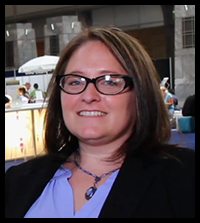Q&A: Learn E-Rate Application Tips from an Expert
During EdTech's latest K–12 webinar, Time for a Network Upgrade, three experts offered advice on how to plan a network overhaul — from the overall strategies involved in choosing the right hardware components to the tactics of implementing them in each school — and shared tips on how to make the best use of funds from the federal E-Rate program.
One of the experts, Amy Passow, CDW•G's E-Rate Specialist, guided listeners on the changes in the coming year's application process — vital information for districts applying for network components.
EdTech spoke with Passow recently to dig a little deeper on the subject:

Amy Passow, CDW•G's E-Rate Specialist.
EDTECH: There have been several revisions to E-Rate's rules and procedures recently. Can you highlight some of the major changes that have occurred to eligible services over the past two years? What's in and what's out?
PASSOW: The changes are to focus eligibility on services that provide broadband. In Category One, the big change is the phase out of telecom services over five years. An applicant’s discount for telecom will be reduced 20 percent annually until it’s zero. In Category Two, a major addition to eligible services is managed Wi-Fi, wherein an applicant can have a service provider provide Wi-Fi or network services.
EDTECH: The FCC's E-Rate modernization effort was about more than raising the funding cap to $3.9B. For districts applying next year, what application changes will they notice? Are there any new requirements or forms to complete?
PASSOW: A major change for funding year 2016 — the current application year — is that all forms must be filed using the E-Rate Productivity Center (EPC), called “epic.” This interface will allow applicants and their consultants to better manage their applications, budgets, and funding commitments.
EDTECH: How is a district's level of discount determined for purchases through E-Rate?
PASSOW: Discounts are determined based on a districts National School Lunch Program (NSLP) enrollment. This is divided by a districts total enrollment to get a NSLP percent, which is then applied to a matrix created by the Universal Service Administrative Company (USAC) to determine the districts discount.
EDTECH: In your experience, what are some of the most popular items districts use E-Rate to apply for? Has that changed in recent years?
PASSOW: Since the E-Rate modernization implemented in 2014, many schools are using their Category Two funds to upgrade to the latest Wi-Fi protocol, 802.11ac, or to upgrade their switching to 1Gb or 10Gb.
EDTECH: For districts new to E-Rate applications, what resources would you point them toward for more information?
PASSOW: The Schools and Libraries Division section of USAC.org is a great source of information. There is an applicant section broken down by step.









